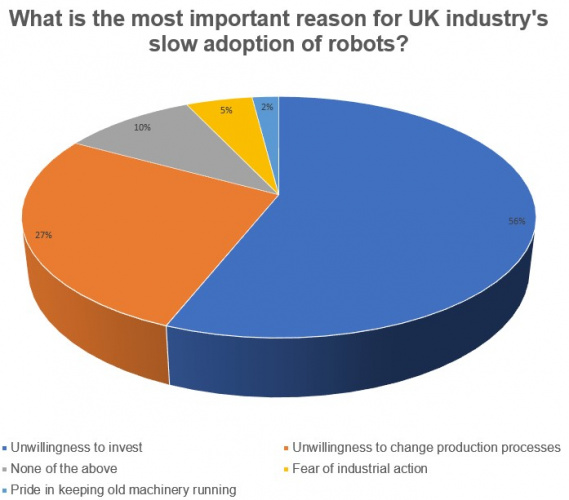Last week’s poll: slow adoption of industrial robots in the UK
The UK government is keen to see a rise in productivity, yet the nation falls short when it comes to installations of industrial robots.


According to the International Federation of Robotics (IFR), Britain’s installed base of industrial robots dropped by three per cent in 2018 following a year of growth that saw sales rise by 31 per cent.
Europe leads the world in relation to the number of robots installed, with 106 industrial robots per 10,000 employees employed in the manufacturing industry, but the UK continues to fall short of its European counterparts.
_________________________________________________________
Further reading
SME manufacturers look to people power and existing machinery to boost productivity
Digital manufacturing: what, where, how and why?
Interview: Ulrich Spiesshofer, CEO of ABB
_________________________________________________________
Why is this? According to Mike Wilson, chairman of the British Automation and Robot Association (BARA), the UK has attracted workers from other countries, removing the need to invest in capital equipment. However, with Brexit looming, businesses will either have to rethink how they use their human resources, or start investing in robot automation.
Register now to continue reading
Thanks for visiting The Engineer. You’ve now reached your monthly limit of news stories. Register for free to unlock unlimited access to all of our news coverage, as well as premium content including opinion, in-depth features and special reports.
Benefits of registering
-
In-depth insights and coverage of key emerging trends
-
Unrestricted access to special reports throughout the year
-
Daily technology news delivered straight to your inbox










National Gas receives funding to develop Gravitricity underground hydrogen storage system
There can't possibly ever be a '<i>business</i>' case for the <i><b>bulk</b></i> storage of hydrogen, since Green hydrogen electrolysis...